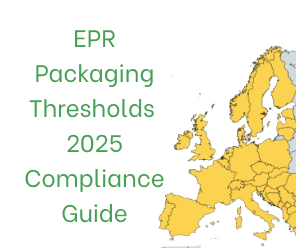6 critical mistakes in VAT calculation on crossborder sales
6 critical mistakes in VAT calculation on crossborder sales
62 countries around the world use the VAT destination principle for e-commerce companies. Such companies must pay VAT\GST\IVA in every country their customers are in. It is not only 62 different tax laws, but also VAT payment in local currency, and language issues. Therefore, the complexity is high and e-merchants face many obstacles. We want to draw your attention to the most common mistakes:
1. Incorrect location of the buyer
This is very important for digital goods. As we move around the world freely, determining our location becomes more and more difficult. According to tax rules, merchants can rely on several pieces of evidence determining customer location such as:
- IP address
- Phone number
- Bank address
- Delivery address
- Billing address
As tax rules across countries vary, sometimes it is not easy to obtain this info. Just imagine: a man originally from Latvia (billing address) moves to Germany for work (IP address) and has a bank account in Lithuania. All pieces differ, so we need at least one more to calculate the right VAT. The answer is to collect as many pieces as possible (and don`t forget the GDPR issue).
Some companies calculate VAT before checkout, just after the goods are in the cart. As soon as they receive payment from the customer, they can receive a contradictory piece of information. The only thing for them to do is to send a notice to the customer to change the info in the order, as payment evidence varies from billing information. For tangible goods – customer location is determined by delivery address in all cases.
2. Insufficient VAT data collected
Some companies use only IP addresses as the only evidence when they sell digital services, but tax authorities don`t consider such information as sufficient. But as our practice shows, this particular element is the most volatile- people move around more and more. The better way is to collect at least 3 pieces to prove the customer’s location for digital goods. For tangible goods departure address and arrival address, and if B2B, the VAT number of a buyer.
3. Incorrect currency conversion rateapplied
Some companies keep accounts in domestic currency. But at the website, they collect money in various currencies. So when it’s time to fill in VAT returns, the currency may have been exchanged two or more times.
The right way is to keep a record in the currency of payment, and exchange it only once – on the last day of the quarter.
4. Use different VAT rates
In each country, there are at least 3 tax rates: Standard VAT rate, Zero VAT rate, and Lower VAT rate.
Tax rules in each country may differ even for the same goods and services. The most common mistake – only using the standard (the highest) rate for all the sales that the company has. For example, e-books in many countries are subject to a lower rate and in some countries are even exempted from VAT. LOVAT will give you precise VAT for your goods or services, you just need to set up your goods codes according to customs 8 digits codification.
5. Determination of the country of taxation
An incorrect taxable country is one of the more common mistakes. You need to consider all VAT data to determine customer country. First of all, VAT thresholds: when you sell over the threshold the next transaction will be with another country’s VAT rate. You can check VAT thresholds here. At LOVAT, the taxable country is determined by a sophisticated algorithm, proven by many tax audits of our users.
6. VAT calculation mistakes
As this tax is indirect and companies use a flat price to sell to contrasting people, to calculate the right amount of tax we need to divide by 100+VAT and multiply by VAT.
20% VAT rate
100 € / 120 * 20 VAT = 16.67€
But in some countries rate is applied straight:
15.57% VAT rate
100 € * 15.57 / 100 VAT = 15,57€



